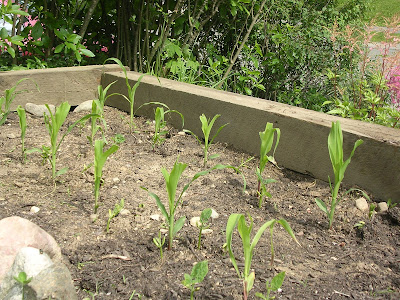 Our vegetable garden is a 17'x14' area in our front yard - small but easy enough to tend in 1 or 2 hours a week.
Our vegetable garden is a 17'x14' area in our front yard - small but easy enough to tend in 1 or 2 hours a week. I've been wondering if it's really worth it. I mean, other than the pleasure I get from toiling in the dirt and the smallish chance my children will be inspired by the sight of vegetables growing and actually want to eat one of them.
So, part of this project is keeping track of the cold hard cash value of what we're pulling out of our garden. So, far, we've gotten about 5 pints of strawberries, 1/2 lb of snap peas and several bags of lettuce and spinach. I'll forget that what we have is local and organic and that that combination commands jaw-dropping prices at the local Whole Foods, and focus on the price of these items as if they were plain old vegetables from the regular grocery store. Current price are $2.50/pint of commercially grown California strawberries, $4.99/pound of snap peas and $4.99/box of mixed greens - bringing the total value of our garden to $24.99, (and it's only June 19th!) and that's ignoring all the snips of chives, basil, garlic scapes, oregano, parsley and cilantro for which I can't begin to calculate the value.


















